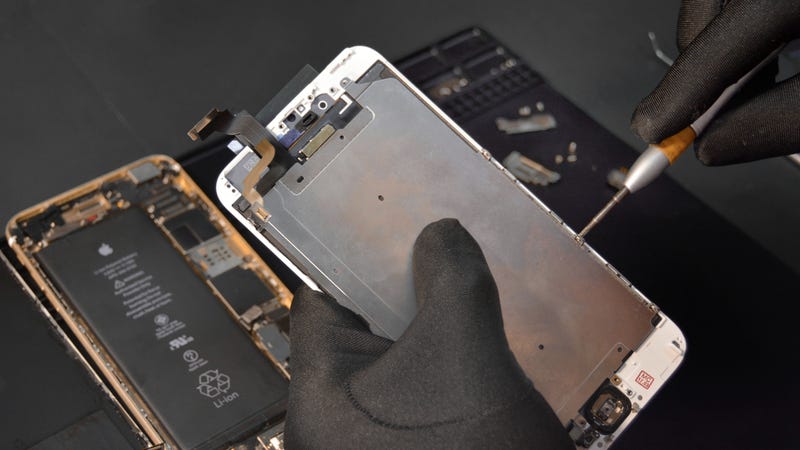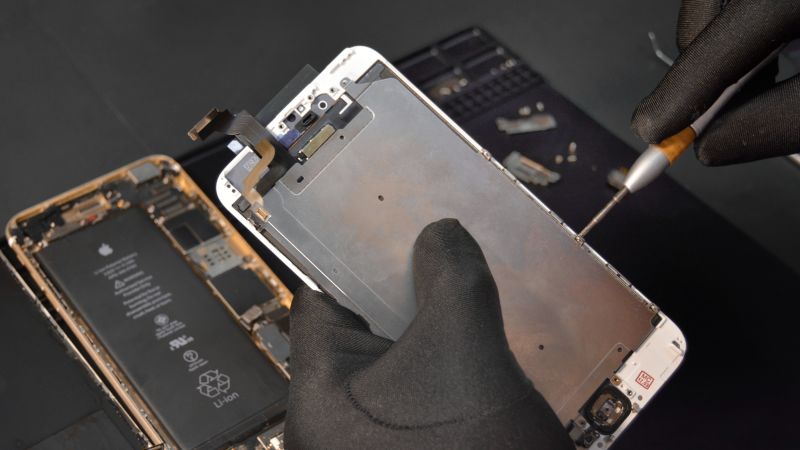
No matter how great your PC or phone is, something will inevitably go wrong one day. The “Right to Repair” movement has been gaining considerable traction lately, and with the right knowledge and equipment, you can fix a whole lot of things yourself. Here are some essential items every DIY gadget geek should have in their toolbox.
iFixit Tech Pro Toolkit
A multi-bit screwdriver will suffice for some repairs, and a set of small precision screwdrivers will take you pretty far. But the deeper you get into gadget repair, the more tools you’ll need: torx and pentalobe bits, spudgers, tweezers, and more. There are some decent low-cost screwdriver sets out there, but the $65 iFixit Pro Tech Toolkit is still king. The price may seem steep, but it comes with so many useful tools—including some specialty bits that you won’t get in most other kits—that it’s well worth the cash. I live and die by this thing, and if I lost it tomorrow, I’d pick up another one without a second thought.
A Magnetic Parts Tray
Repairing gadgets means working with lots of teeny tiny screws that you will inevitably drop, lose, or get stuck somewhere. After having that happen one too many times, I picked up this $5 magnetic parts tray. Just drop in any metal pieces, and they’ll stick to the bowl until you pull them back out. You can even hang it sideways on your PC case or filing cabinet for easy access. If you want something a little more versatile, this magnetic project mat lets you separate screws by location, and write down where they go in dry erase marker.
A Screw Extractor
Picture this: you’ve opened up your laptop, found the part that needs replacing, and you’re feeling pretty victorious—until you come upon a stripped screw that just won’t budge. There are few things more frustrating, and I’ve tried numerous tricks over the years to remedy the situation. Nothing—and I mean nothing—has worked as well as this glorious screw extractor. (In fact, I’m a little annoyed it isn’t bundled with the aforementioned iFixit Toolkit.) Just grab the screw by the edges, and twist it out. In situations where the screw head is flush with the surface, or the head is completely destroyed, these extractors may work better.
Isopropyl Alcohol and Microfiber Cloths
Rubbing alcohol—specifically, 99% Isopropyl Alcohol—is the magical elixir of the tech world. It’s great for wiping dirt and grime off your laptop, removing leftover sticker gunk, and even cleaning grime and corrosion off your computer’s insides. If you’re having heat issues, it can even help clean off old thermal paste so you can put some new paste on. If you don’t already have this in your house, grab a bottle (along with some microfiber cloths) and keep it on hand for those tough cleaning jobs.
A Dual USB-A and USB-C Flash Drive
Once upon a time, a single flash drive was enough to repair any computer. But in this transitory period between USB-A and USB-C, you’re going to want a dual flash drive like this one from SanDisk. You’ll be able to copy data to and from any machine, including Apple’s USB-C-only MacBooks, and it even works on USB-C equipped Android phones. And if you need a list of essential software tools to go on it, check out this roundup from How-To Geek.
An LED Flashlight (or Clip-On Reading Light)
Ever tried to fiddle with connections inside a dark cabinet? Or retrieve a screw from a crevice where the sun just doesn’t shine? Every tech toolbox benefits from a small LED flashlight. Sure, you could use the one on your phone, but it doesn’t fit into tight spaces quite as well, and why waste precious battery when you don’t have to? I’ve actually found that clip-on reading lights, like this one, work even better, since you can prop them up any which way to see what you’re doing.
A USB Hard Drive Dock
One day, your hard drive will fail. (That’s why you should back it up now.) Or maybe you’ll just want to upgrade to a more spacious one. Whatever the case, you’ll need to copy your data over to the new drive, and there’s no easier way to do that than with a USB hard drive dock. This is one of those products that seems like a one-time use thing, but I’ve used mine regularaly for years, and it’s so much easier than using an external drive as a middleman.
All Those Pre-BuCables and Accessories (Don’t Throw Them Away!)
If you’ve been a tech head for a while, you’ve probably amassed a cluttered box full of cables, CDs, manuals, screws, and other accessories. Some of those things you can throw away—like the manuals and driver discs you can just grab online—while others are absolutely worth keeping. You may not need that VGA cable now, but one day, you’ll be glad you had it. All it takes is a little organization. I keep all my spare PC parts in the motherboard’s box, and put cables and other large accessories into a set of stackable drawers I got from the Container Store, separated by use case (and complete with nice printed labels). Any set of clear drawers will work, though, and will make your collection of crap much easier to sort through.
These aren’t the only tools you’ll ever need, of course—specialized tools like ethernet crimpers will always require another trip to the hardware store when you need them—but these are the tools I use all the time, and should have bought way sooner than I did. They make almost every repair job easier.













